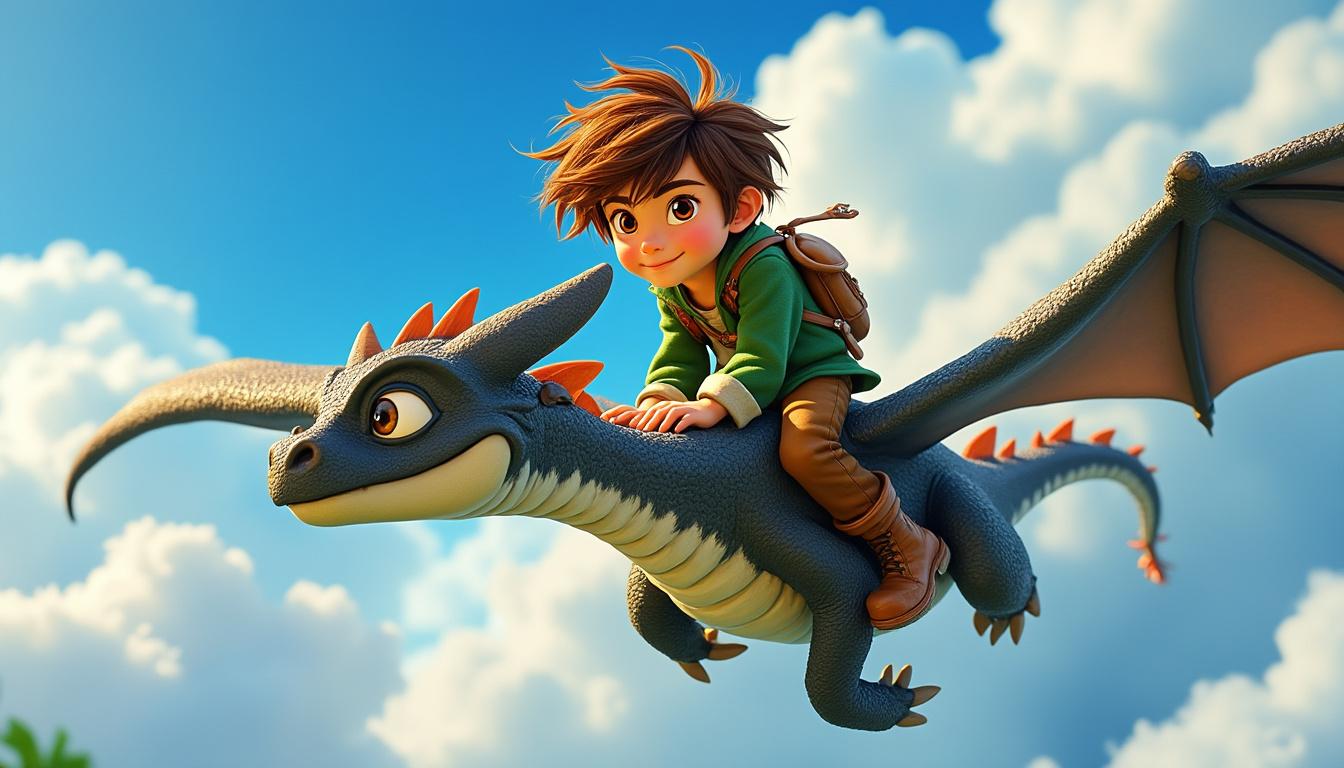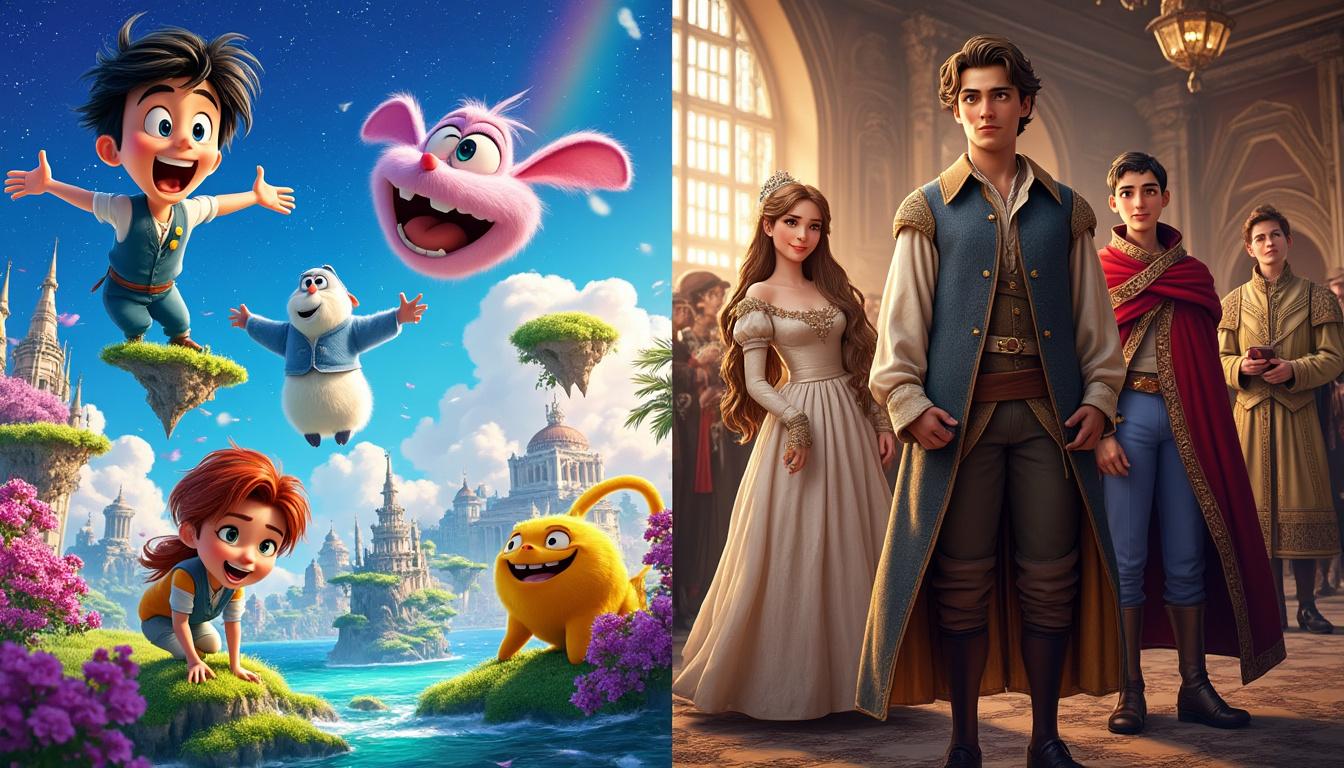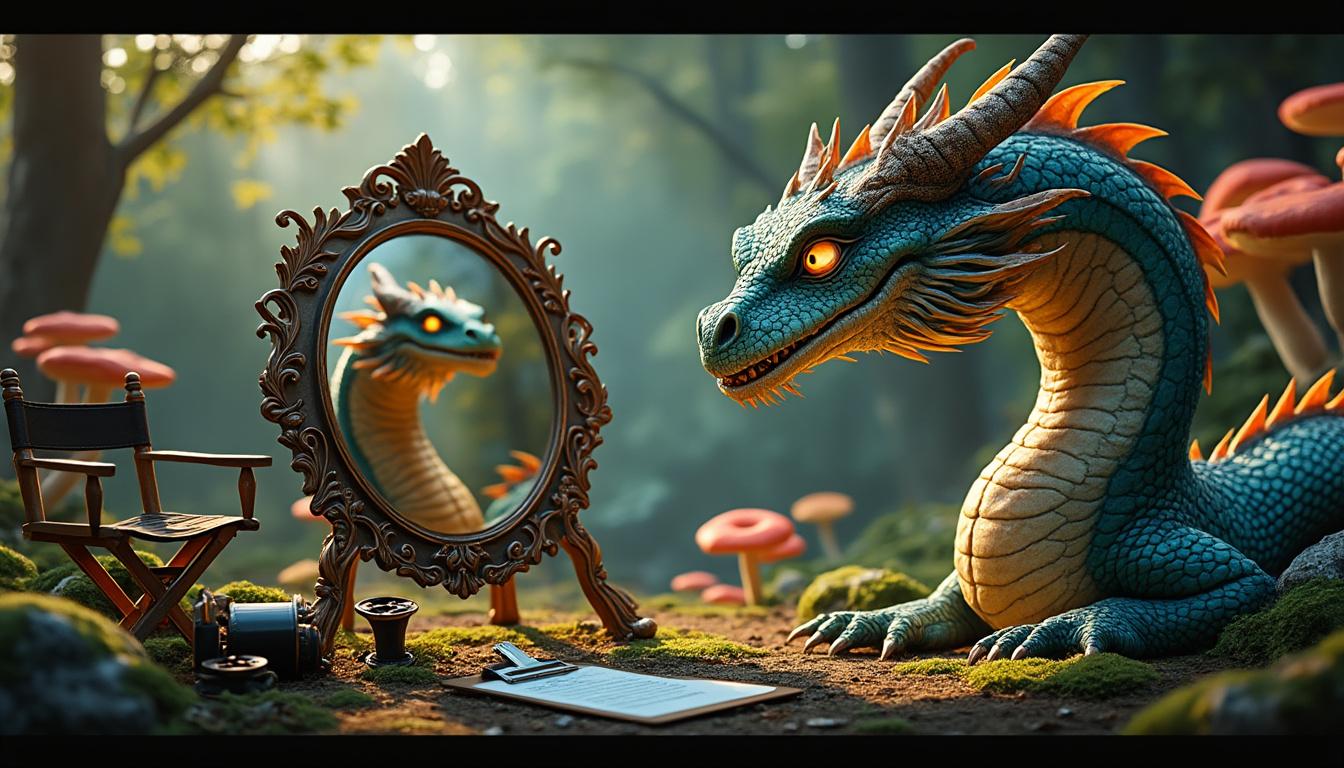The realm of animated films has seen a surge in remakes, often with mixed reactions from audiences. As studios seek to capitalize on nostalgia, viewers are left questioning the value of these renewed visions. In 2025, the release of DreamWorks’ live-action adaptation of How to Train Your Dragon has reignited discussions about creativity in cinema. This article provides an in-depth analysis of this latest venture and examines whether audiences truly benefit from yet another rendition of a beloved classic.
The Original’s Impact: A Legacy Worth Remaking
Released in 2010, How to Train Your Dragon swiftly captured hearts with its exquisite animation and innovative storytelling. Directed by Chris Sanders and Dean DeBlois, the film not only entertained but also imparted important life lessons about friendship, acceptance, and overcoming fear. The vibrant world of Berk, home to Hiccup and Toothless, resonated with both children and adults, creating a multi-generational fan base.

The success of the original film birthed a trilogy, featuring two sequels that expanded the narrative universe while exploring deeper themes. DreamWorks carved a niche in the animation realm, challenging rivals such as Pixar and Illumination with their daring narratives and striking visuals.
However, with great success comes the temptation to revisit and reinterpret. The announcement of a live-action remake raised eyebrows. Filmmakers often grapple with how to pay homage to an original work without retreading the same creative ground. How to Train Your Dragon serves as a prime example of this challenge, with its core values and emotional beats firmly ingrained in viewers’ memories, leaving little room for reinterpretation.
While the original was celebrated for its groundbreaking visuals and storytelling, one must consider the risks inherent in remakes. Some fans cherish the idea of reliving their favorite moments on screen, while others lament the potential for stagnation in creativity. Directors must tread carefully while balancing the nostalgia factor against the opportunity for innovation.
The Journey from Animation to Live-Action: Choices and Challenges
Transitioning from animation to live-action requires a careful examination of story elements, character development, and visual aesthetics. In a landscape increasingly dominated by remakes from major studios like Warner Bros, Sony Pictures, and Disney, the expectation is that each new iteration offers a fresh take or contemporary relevance.
In the case of the live-action adaptation of How to Train Your Dragon, certain aspects displayed genuine effort. For instance, maintaining the foundational themes of Hiccup and Toothless’s friendship was crucial. However, some critics pointed out that the film merely regurgitated the dialogues and scenes of its predecessor without significant transformations. With an estimate of 70% of the dialogue being lifted from the original, audiences were given an inconsistent mixture of nostalgia paired with disappointment.
| Elements in the Original vs. Remake | Original (2010) | Live-Action (2025) |
|---|---|---|
| Animation Style | Exquisite CGI, unique character designs | Photorealistic CGI, faithful to designs but lacking animation charm |
| Storytelling Depth | Inspiring character arcs and relatable themes | Similar beats but little new narrative depth |
| Audience Engagement | Emotional resonance and relatability | Similar emotions lacking innovative engagement |
The seamless blending of animation into live action can sometimes lead to disappointing outcomes. The filmmakers’ choice to mirror the original film left many expecting a re-energizing adaptation, yet they found themselves with a retread of familiar content. Openings from both adaptations revealed a copy-pasta narrative that can be viewed as homage or stagnation, depending on the viewer’s perspective.
Audiences’ Reception: Nostalgia vs. Innovation
As discussed, a major driving force behind remakes is the connection to nostalgia. Audiences flock to theatres for various reasons — the desire to relive childhood memories, to introduce new generations to memorable tales, or merely for the visual spectacle and technology advancements. The live-action How to Train Your Dragon caters to all these facets but faces scrutiny for its lack of originality.
One cannot ignore the careful construction of Hiccup and Toothless’s relationship, which remained solid despite being the same story retold. Emotional scenes from the original retained their impact, but the questions arise—how many times can the same emotional beats resonate without falling flat? Striking visuals, soaring dragons, and heartwarming friendships may hold viewers’ attention momentarily, but the question of originality looms heavy.
The crux of the matter lies in what viewers truly seek from a remake. Possibilities abound:
- Bold re-imaginings that elevate the source material
- Faithful adaptations that respect and honor the original
- Subtle fresh angles or deeper dives into character backstories
- The spark of creativity that reignites passion in storytelling
While many live-action adaptations, such as those from Columbia Pictures and Pixar, have managed to find unique angles on familiar tales, others have fallen prey to recreated tropes, rendering them little more than cinematic cash grabs — an unfortunate reality facing filmmakers and audiences alike.
The Corporate Machine: Hollywood’s Reliance on IP
The landscape of film production has shifted dramatically towards the reimagining of existing intellectual properties (IP). Major studios, including Universal Pictures and Blue Sky Studios, have increasingly opted to draw from already established hits rather than investing in original concepts. This shift has far-reaching implications for storytelling, creativity, and audience expectations.
Audiences are often left feeling as if they are consuming reheated leftovers, a sad reflection on Hollywood’s current direction. Several contemporary remakes, like the upcoming Amityville Horror reboot and numerous discussions around the Lilo & Stitch remake, highlight the growing trend of recycling plots in cinematic releases.
The current situation raises questions: Will this era of remakes ultimately lead to storytelling stagnation? Are audiences willing to accept rehashed ideas, or will they demand fresh narratives? Streaming platforms like Netflix have paved the way for original content sought by viewers, establishing a significant contrast between that creativity versus the recycling of blockbuster hits.
Comparative Evaluations: The Broader Landscape of Remakes
The live-action remake of How to Train Your Dragon is but one piece in a larger trend reflecting the industry’s reliance on past successes. While studios may consider remakes to be safe investments, one must wonder if true artistry is sacrificed on the altar of profit. For every audience member enthralled by nostalgia, another questions the lack of depth and original storytelling.

Exploring the wider landscape reveals a spectrum of remakes, each with varying degrees of success or failure. The 2020 adaptation of The Lion King, for example, aimed for a visually stunning approach but missed the high-impact emotional beats that defined its predecessor. Conversely, projects such as the live-action reinterpretations of classic Disney films have at times offered fresh perspectives or deeper character insights.
When examining how different studios engage in remakes, there are certain key themes to consider:
- The choice between strong visual aesthetics versus emotional resonance
- Degrees of faithfulness to source material and what it should entail
- Innovative re-imaginings versus simplistic recreations
- Opportunities to expand narratives or reclaim lost character depth
| Major Studios and Their Remake Trends | Examples | Success Rate |
|---|---|---|
| Disney | Aladdin, The Lion King | Mixed |
| DreamWorks | How to Train Your Dragon | Moderate |
| Warner Bros. | It, The Matrix | Varied |
| Pixar | Finding Dory, Toy Story 4 | High |
When considering how remakes can traverse the spectrum from triumph to failure, it becomes necessary to evaluate what differentiates a successful film from merely another lifeless imitation. Originality, emotional depth, and innovative approach to storytelling are essential components that studios must reconsider to establish connection with both new and existing audiences.
Conclusion: A Retread of Familiar Trails or a New Pathway Forward?
The live-action adaptation of How to Train Your Dragon raises critical questions about the current state of Hollywood and its relationship with audiences. In a landscape inundated with remakes from various studios, including Paramount Pictures, Columbia Pictures, and many others, embracing innovation may be the answer to extending the lifespan of storytelling in cinema.
As the 2025 film industry navigates through nostalgic waves, viewers continue to seek dynamic narratives. Revitalizing timeless characters is valuable, but doing so without delving into the artistic potential may foster feelings of redundancy. A richer tapestry woven from fresh ideas, character evolution, and emotional engagement may pave the way for a delightful resurgence of creativity.


